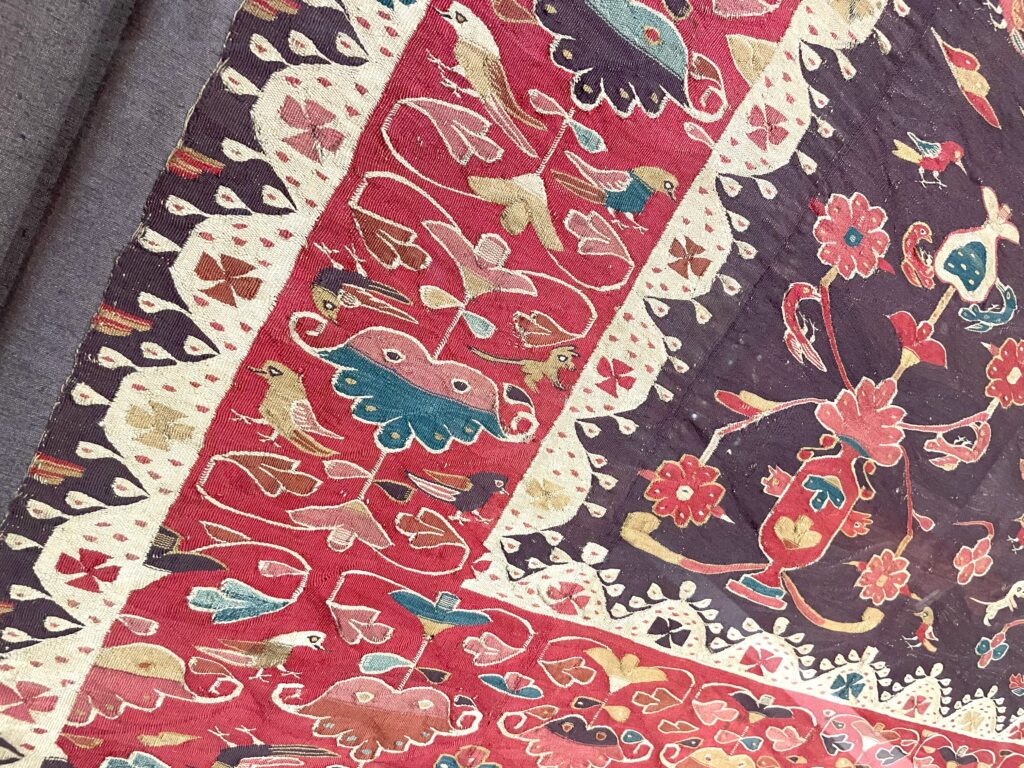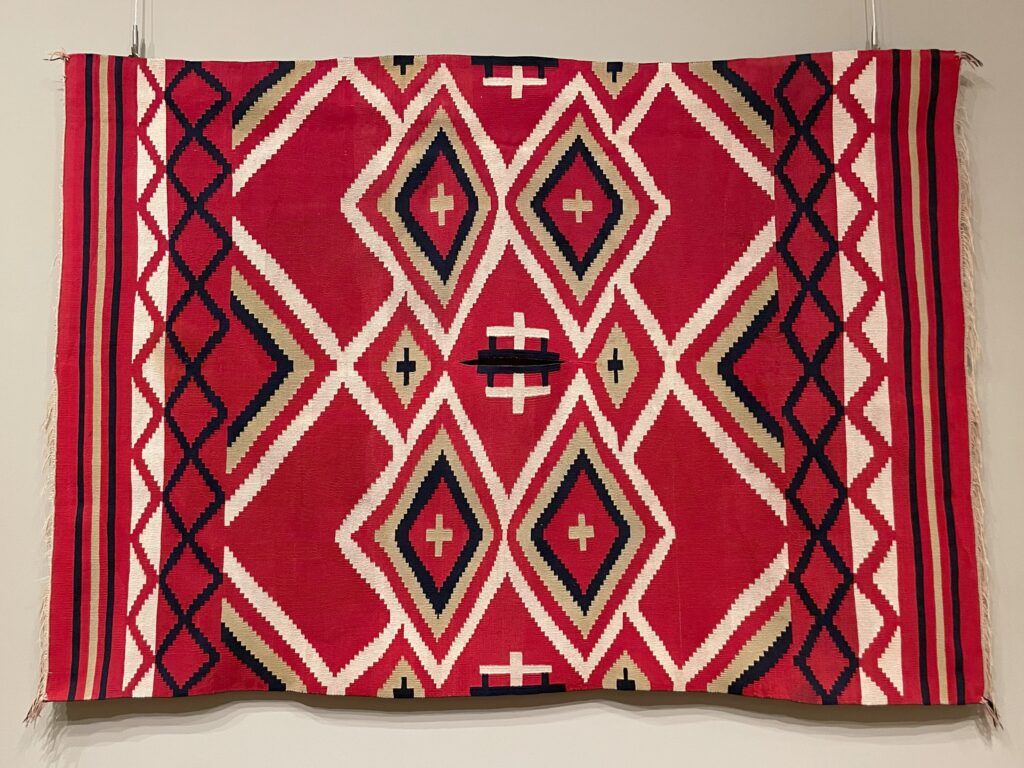Thank Shaw for his English reading recording, which you could listen to by clicking the audio above.
感谢肖为本文提供英文朗读录音,点击上方音频可听。
In mid-February of 2024, I joined a conference in the USA, marking my first trip to the Americas. The conference was hosted by Harvard University. So, I got an opportunity to visit its campus, its Peabody Museum, and the city of Boston as well. Things went like something of a pilgrimage, as I had heard about Harvard’s Department of Anthropology and the Peabody Museum for many years.
2024年2月中旬,我去美国参加了一个会议,也得以第一次踏足美洲。会议由哈佛大学主办,于是我也有机会参观了哈佛校园、哈佛皮博迪博物馆和波士顿这座城市。此行感觉有点像朝圣,因为我久仰哈佛考古人类学系和皮博迪博物馆的大名。
I knew about Harvard’s anthropological archaeology, not because of its high reputation but because of a Chinese archaeologist, Kwang-chih Chang. I happened to read an article on Chang’s oral history 5 years ago, about his suffering during the Four Six Event in Taipei. After reading his tragic stories in prison, I was deeply impressed by the last lines. Chang said it was just this experience that had motivated him to study anthropology afterward, because he wanted to know what makes us human.
我知道哈佛的考古人类学系,不是因为它在考古学界的盛名,而是因为一位华裔考古学家,张光直先生。五年前,我偶然读到一篇张光直的口述文章,讲述他在台北四‧六蒙难的经历。读完他在监狱的悲惨生活,我对文末几句印象深刻。他说,正是这段在监狱的经历让他后来选择去读人类学,因为他想知道人何以为人。
Chang earned his doctor’s degree at Harvard University. And years later, he founded the subject of Chinese Archaeology there. Today, a notable line is still on the homepage of the Harvard Department of Anthropology: Anthropology is the study of what makes us human.
后来,张光直在哈佛大学取得博士学位,若干年后又在那里创立了中国考古学专业。如今,哈佛大学人类学系的网站首页还有那句话:人类学就是研究人何以为人。

哈佛人类学系主页截图
My chance to know Harvard Peabody Museum was given by an American archaeologist, Irene Good. Around 6 years ago, I found a series of English papers on silk archaeology in Eurasia. The main author of these papers is Irene Good, and her institution is Harvard Peabody Museum. These papers opened the door for me to contemporary Western research in textile archaeology. Excitedly, I looked into thedetails about this scholar and her institution. However, the latest update I could find about her was a memorial article, for her passing away in 2013.
我了解到哈佛的皮博迪博物馆,是因为一个美国考古学家Irene Good。大概六年前,我读到了一系列关于欧亚大陆蚕丝考古的英文论文。这些论文的主要作者是Irene Good,而她的单位是哈佛大学的皮博迪博物馆。这些论文让我看到了与我同时代的西方学者对纺织考古的研究,使我非常兴奋,于是上网检索有关这位作者及其单位的信息。结果,我能找到的最新动态,是一篇关于她2013年去世的悼文。
I sadly closed the webpage and turned back to my academic reading. But it didn’t cut my possible connection with her and Harvard in the future. 4 years later, I studied at CTR in Denmark and learned that Irene also visited many years ago. 5 years later, I got an opportunity to visit Harvard in person, thanks to my academic research.
我遗憾地关掉网页,回到我的文献阅读中,但这一憾事并未掐断我后来与她以及哈佛产生关联的可能。四年后,我去丹麦的纺织品研究中心访学,得知Irene多年前也来这里工作过。五年后,我用我的学术研究,也到达过哈佛大学。

哈佛校园景色
Europeans reached Americas in the 15th century and called it the New World. For me, coming to America this time was also like exploring a new world. Beyond the extended travel history, my knowledge about world historical textiles wasalso expanded.
欧洲人于15世纪到达美洲,将其称为新大陆。对我来说,这次来美国也像是进入了一个新的世界。不仅我的旅行足迹又多了一些,我对世界纺织史的认知也拓宽了。
I came to the USA with another girl attending the conference. After arriving in Boston and before the conference started, we had some time so we went to the MFA, Museum of Fine Arts Boston. It was in the galleries of Art of the Americas there that I started to know a little history of the Americas. And unexpectedly, I came across textiles that I was most familiar with, among all the art pieces.
我是和另一个参会的女生一起来美国的,在我们到达波士顿和会议开幕之前还有些时间,于是我们去了波士顿美术馆。正是这里的美洲艺术展厅,让我开始了解了一点点美洲的历史。而意料之外的是,我在众多艺术品中还看到了几件我最熟悉的纺织品。

波士顿美术馆夜景
They were tapestries from theAmericas, used for carpets, blankets, coverings, clothing, and accessories. Reading descriptions on the labels was a little difficult. Because they were too foreign for me. I knew next to nothing either about ancient civilizations or colonial history in the Americas.
这些纺织品,是用作各种毯子和服饰的美洲缂织物。阅读它们铭牌上的描述让我有些吃力,因为我对美洲的古文明和殖民史都所知甚少,这里的信息对我来说实在有些陌生。
The first tapestry I saw in the MFA, is an Inka weave from Peru of late 17th to early 18th century, used for hanging or covering. The pattern and motifs on it are written to be European-influenced designs after the Spanish invaded Peru in the 16thcentury.
我在波士顿美术馆看到的第一件缂织物,来自17世纪末18世纪初的秘鲁,为印加式样,用于挂饰或覆盖。据铭牌描述,上面的纹样和图案是自16世纪西班牙人涌入秘鲁之后,受到了欧洲影响的设计。

秘鲁17世纪末18世纪初的一件缂织物

织物细节
Several steps away, there is another tapestry with an older and more native style. It is written to be a mantle or hanging from the North Coast in Peru, of Chimu-Inca culture in 1476-1534. Next to it, there is an even older one used as a headband, also from Peru but of Chimu culture between 1000-1476. All three tapestries are made with camelid wool and cotton.
再走几步,有一件年代更早、风格更本土的缂织物,来自秘鲁北海岸,是属于1476-1534年间奇穆-印加文化的披风或挂毯。在它旁边还有一件比它更古老的缂织头带,同样来自秘鲁,但属于1000-1476年间的奇穆文化。这三件缂织物都是用羊驼毛和棉花织成的。

1476-1534年间奇穆-印加文化的一件披风或挂毯

织物细节

1000-1476年间奇穆文化的一件头带
Apart from these three, I saw a wool tapestry woven by a Navajo artist, written to be woven in around 1860 in Arizona or New Mexico. Something special about it is a big slit at its center. After reading the label, I learned a new term, poncho serape, which is an outerwear with a central opening that would slip over the wearer’s head. Navajo weavers created serapes for their own use and to trade with other new arrivals to the region. The rectangular shape and serrated diamond patterns were inspired by Spanish American serapes.
除此以外,我还看到一件羊毛缂织物,可能是一个来自美国亚利桑那州或新墨西哥州的纳瓦霍人在1860年左右做的。这件织物有个比较特别的地方,就是在它的正中央有一道较长的口子,通过阅读介绍,我学到了一个新的术语:“彭丘披风”,就是指这种中间开口好让人伸出头的穿用织物(serape是源于西班牙语sarape的英文词汇,指美洲西班牙裔常穿的一种披风;而poncho也是西班牙语词汇,专指这种在一大块织物中间开洞的披风,是南美洲的一种传统服装。)纳瓦霍人织这种披风,或为己用,或与外族人交易用。这件织物的形状和锯齿边钻石纹样,是从西班牙裔穿的披风那里获得的灵感。

1860年左右一个纳瓦霍人织的彭丘披风
After the conference, I got a chance to visit my long-expected Harvard Peabody Museum. I hereby thank Qinlin, a Harvard student, who offered me a free admission. The museum’s full name is the Harvard Peabody Museum of Archaeology and Ethnology, and it also houses Harvard’s Department of Anthropology.
会议结束后,我参观了期待已久的哈佛皮博迪博物馆,在此需要感谢哈佛的学生沁霖带我免票入场。这座博物馆的全称其实叫哈佛大学皮博迪考古学与民族学博物馆,哈佛的人类学系也在这里。
If the artworks at MFA had taught me some basic knowledge about textiles from the Americas, the exhibitions at Harvard Peabody Museum would be like a textbook introducing theprehistory of the Americas. From the exhibitions of North American history, I strongly felt that textiles and their related objects were indispensable in human lives. Aside from tapestries and a detailed introduction to Navajo weaving, I saw many braids, baskets, and hunter-gatherer tools. They are not regarded as textiles but are closely linked with textile technologies.
如果说波士顿美术馆的艺术品教会了我一些关于美洲纺织品的基础知识,那皮博迪博物馆的展览就像是一本介绍美洲史前史的教材。参观北美历史相关的展览时,我强烈感受到纺织品及其相关物件在人类生活中的不可或缺。在各种缂织物和关于纳瓦霍织造的详细介绍之外,我还看到了许多编物、篮子和各种狩猎采集工具。这些东西严格说来不算纺织品,但它们与纺织技术息息相关。

北美纳瓦霍人的编篮(1860-1900)

美洲皮马人的编篮(制作于1902年之前)
I did like the models recreating prehistoric life here. They are small, cute, and impressively nuanced with technical details. As I noticed from my professional background, there were miniature baskets and serapes with the same shape and pattern as objects on display. And even the miniature vertical looms were equipped with threads and small tools. I felt that these model scenes were meticulously created based on historical materials, rather than being figments of imagination.
我特别喜欢这里的史前生活复原模型,它们很小很可爱,还对一些技术细节进行了惊人复刻。就以我的专业嗅觉来说,里面有些微型篮子和披风,其形制和上面的图案都能与展出的实物相吻合,甚至连迷你竖织机上都有一根根的线和细小的工具。这让我感觉这些场景模型严格参考了史料,而不只是凭空的想象。

竖织机织造场景模型

带编篮的史前生活场景模型

史前仪礼中的人们
I have seen many ancient tapestries in Europe. Nearly all of them are large and intricately patterned pieces, hanging on the walls purely for watching. I can’t recall ever seeing tapestries with simple patterns in Eurasia. So, seeing tapestries from the Americas felt refreshing to me. Most of the tapestries I saw in Boston, have relatively coarse textures and patterns. They were not just decorative pieces meant for display, but functional products for daily use. In this way, textiles from the Americas felt like a whole new world to me.
我在欧洲见过很多古代缂织物,几乎都是图案精细复杂的大件,挂在墙上仅供观赏(这或许是tapestry一般被翻译为“挂毯“或”壁毯“的原因)。我没印象在欧亚大陆见过什么图案简约的挂毯,所以美洲缂织物给我的观感非常新鲜。我在波士顿看到的缂织物,大部分都有着相对粗糙的纹理和相对简单的图案。它们不是仅作展示的装饰物品,而是日常使用的功能用品。就这一点来说,美洲织物于我而言的确是崭新世界。
On another floor of the Harvard Peabody Museum, there is an exhibition about Central America, home to more prosperous ancient cultures. When I saw the ancient Maya script, I thought of our oracle bone scripts and the hieroglyphs in ancient Egypt. After a long time visiting, I didn’t have much energy left so I only gave this exhibition a quick glance. I wish I could explore Central and South America in the future, and learn more about North America as well.
皮博迪博物馆还有一层展示了古文化更加繁荣丰富的中美洲。当我看到玛雅文字的时候,我想起了我们的甲骨文和古埃及圣书体。由于我看展太久能量将尽,对这一层的展览只是匆匆掠过,希望未来我还能探索中美洲和南美洲,也能对北美洲了解更多。

A Maya painting with Maya script